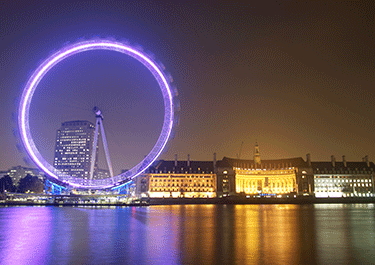 Imagine stepping out of your apartment into the city of the future. The first thing you notice is a patch of grass which, because embedded sensors have determined it is too long, have signaled an autonomous drone to appear and trim it. When the grass is trimmed, the clipping aren’t thrown out or incinerated, but flown by drone to mulch your building’s rooftop garden. Energy-efficient solar panels seamlessly woven into the architecture power the system. And that’s just where it starts. From home to work and back, you’re living in a city with connected technology woven into the infrastructure. The city of the future is the smart city.
Imagine stepping out of your apartment into the city of the future. The first thing you notice is a patch of grass which, because embedded sensors have determined it is too long, have signaled an autonomous drone to appear and trim it. When the grass is trimmed, the clipping aren’t thrown out or incinerated, but flown by drone to mulch your building’s rooftop garden. Energy-efficient solar panels seamlessly woven into the architecture power the system. And that’s just where it starts. From home to work and back, you’re living in a city with connected technology woven into the infrastructure. The city of the future is the smart city.
While the example above still reads like science fiction, such innovations are closer that you might thing. Municipalities around the world around work to implement technology and strategies that leverage wired devices and big data to make for a more convenient, productive urban experience. London is one city at the forefront of investing in the concept of a tech-enhanced, connected city.
So, if you’re going to be in London for the EMEA Member and Partner Conference, scheduled 17 and 18 October at etc.venues County Hall Riverside Building, here are some innovations the city has already rolled out and some it has in the offing that use data-driven and wired solutions to help citizens live and work better.
Heating Buildings with the Subway
Finding creative ways to rethink how we use resources and utilizing technology to close the loop between what we discard and what we can use is a key principle for creating more efficient, cleaner cities. In keeping with that, one of the coolest parts of London’s smart city initiative is the way it uses heat.
The London Underground, like all subway systems, generates plenty of heat between the trains and the commuters. London has begun to leverage this overlooked natural resource, piping heat from subway vents into the heating infrastructure and using it as a form of clean energy for home heating.
Free Wi-Fi – Everywhere!
At the heart of a smart city is high-speed internet access. Sure, you can manage to work remotely, shop mobile or order food while bouncing from your provider’s mobile network to store-provided Wi-Fi and back; sometimes at a cost. But to really promote widespread internet usage, the city itself needs to provide it. And so earlier this year London became the second global city to offer free super-fast public Wi-Fi. The city, in conjunction with telcom company BT, has repurposed its old public phone boxes into hotspots.
But that’s only the first step. With high speed Wi-Fi in place, London plans to use the kiosks as environmental monitors and sensors, as well as the foundation for many other connected endeavors.
Supporting Technology
While the smart city concept is about implementing technology that citizens can use, it’s also about creating synergistic relationships with a vibrant tech sector. With around 40,000 tech businesses at last count, London frequently taps its tech community to solve big problems, and facilitates professional connections between startups with its Tech.london initiative. The more tech the city supports, the more tech the city can make use of – now and for the future.
Thinking Far Ahead …
It’s still the early days of the smart city concept, but as London leads the way it’s not just helping out businesses – it’s getting citizens hip to the smart city concept.
A recent exhibition at Queen Elizabeth Olympic Park gave 2,000 visitors a look at prototype smart homes and other entertaining IoT tools. But today’s fun prototypes may very well be the underpinnings of daily living as London tomorrow, as its business and citizens keep getting smarter – and staying connected.
It’s not too late to sign up to learn about the latest in tech and the IT industry at the EMEA Member and Partner Conference. Register today!
Matthew Stern is a freelance writer based in Chicago who covers information technology, retail and various other topics and industries.

